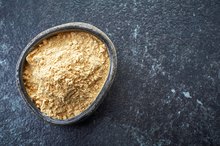What Are the Side Effects of Laudanum?
Laudanum was a popular Victorian-era beverage consisting of alcohol and opium. Due to its strong pain-killing properties, it was used to treat a wide variety of ailments, from the common cold to heart disease. Today, laudanum, or “tincture of opium” as it is referred to in the medical community, is a strictly regulated substance in both the United States and United Kingdom due to the presence of morphine in its mixture 1. It is now generally used as a strong anti-diarrheal medication or prescribed to help alleviate withdrawal symptoms in newborns born to opiate-dependent mothers.
If you are experiencing serious medical symptoms, seek emergency treatment immediately.
Physical Dependence/Addiction
Since laudanum’s most important and potent active ingredient is morphine, there exists a high potential for tolerance and physical dependence/addiction associated with its continued ingestion. Opiate-related addiction can develop with the prolonged use of laudanum, and discontinuing its use after such time can result in significant withdrawal symptoms. As such, tapering dosages is highly recommended prior to stopping use altogether. Because of its potential for abuse, and because morphine is already quite effective when used by itself, laudanum is very rarely prescribed for pain-relieving purposes as part of modern medicinal practices.
- Since laudanum’s most important and potent active ingredient is morphine, there exists a high potential for tolerance and physical dependence/addiction associated with its continued ingestion.
- Because of its potential for abuse, and because morphine is already quite effective when used by itself, laudanum is very rarely prescribed for pain-relieving purposes as part of modern medicinal practices.
Respiratory Depression
Side Effects of MDMA
Learn More
Due to its very high concentration of alcohol (ethanol), laudanum has the potential to induce respiratory depression or distress, especially when taken in large quantities. Related symptoms include shortness of breath or slow/irregular breathing.
Constipation
As with other types of opiate-related substances, laudanum acts to inhibit the contraction of certain types of muscles within the body. This can manifest itself in the form of constipation in many users. Due to this particular property, laudanum is most often prescribed today as a treatment for severe diarrhea in patients that do not respond to more traditional medicinal remedies.
Euphoria
Hydrocodone Used with Caffeine
Learn More
Due to its strong opioid properties, tincture of opium can contribute to elevated feelings of well-being or elation 1. Laudanum’s main ingredient, morphine, acts on the brain’s opiate receptors, creating a euphoric feeling in its users. Not surprisingly, this particular property is the likely root of its popularity as an analgesic cure-all during Victorian times. Unfortunately, this side effect is also a contributing factor in its potential for becoming a habit-forming/addictive substance.
- Due to its strong opioid properties, tincture of opium can contribute to elevated feelings of well-being or elation 1.
- Laudanum’s main ingredient, morphine, acts on the brain’s opiate receptors, creating a euphoric feeling in its users.
Dysphoria
While opiates in general, and laudanum in particular, often contribute to feelings of euphoria in users, these substances also have the ability to induce dysphoria, which refers to a saddened or depressed state of mind. This may be especially true in users who have developed a physical dependence.
Miosis
Miosis refers to the constriction of the eyes’ pupils. Opiate-related drugs, including laudanum and morphine, are known to have the potential to cause the symptomatic constriction of users’ pupils, even in the absence of high levels of light.
Itching
Intense itching, or pruritus, can result from prolonged opiate usage, especially morphine. This may be due to the fact that opioids actively contribute to the release of histamines within the body.
Related Articles
References
- Health Library: Opium Tincture
- Shah SB, Hanauer SB. Treatment of diarrhea in patients with inflammatory bowel disease: concepts and cautions. Rev Gastroenterol Disord. 2007;7 Suppl 3:S3–S10.
- Disher T, Gullickson C, Singh B, et al. Pharmacological Treatments for Neonatal Abstinence Syndrome: A Systematic Review and Network Meta-analysis. JAMA Pediatr. 2019;173(3):234–243. doi:10.1001/jamapediatrics.2018.5044
- Powers D, Erickson S, Swortwood MJ. Quantification of Morphine, Codeine, and Thebaine in Home-Brewed Poppy Seed Tea by LC-MS/MS. J Forensic Sci. 2018;63(4):1229–1235. doi:10.1111/1556-4029.13664
- Ghelardini C, Di Cesare Mannelli L, Bianchi E. The pharmacological basis of opiods. Clin Cases Miner Bone Metab. 2015;12(3):219-221. doi:10.11138/ccmbm/2015.12.3.219
- U.S. Food and Drug Administration. Highlights of prescribing information. Morphine sulfate tablets, CH. Updated January 2012.
- Bodor GS. The Laboratory's Role in Opioid Pain Medication Monitoring. EJIFCC. 2012;23(2):55–62.
- U.S. National Library of Medicine. MedlinePlus. Paregoric. Updated October 2015.
- Mayo Medical Labs. Opiates.
Resources
Writer Bio
Demi Buckley's 10 years of professional writing experience have included investigational and technical writing positions for some of the biggest names in the pharmaceutical industry, including Abbott Laboratories and Baxter Health Care. He earned his B.S. in biology (with a minor in English/creative writing) from Northeastern Illinois University in Chicago.









